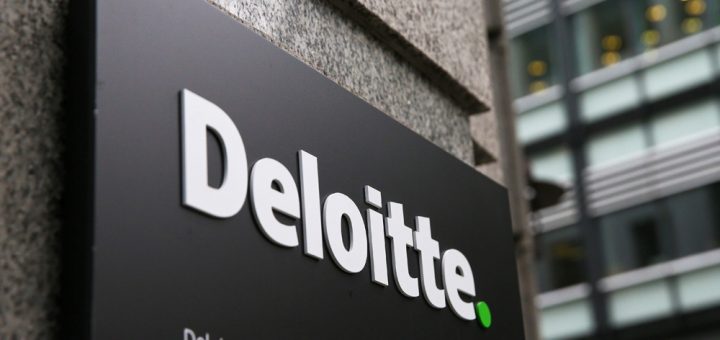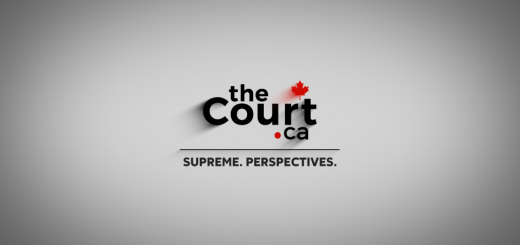Deloitte & Touche v Livent Inc.: A New Duty of Care for Auditors

On December 20, 2017, the Supreme Court of Canada (the “Court”) released Deloitte & Touche v Livent Inc., 2017 SCC 63 [Livent], a decision in which the Court refined the framework for analyzing a defendant’s duty of care in cases of negligent misrepresentation of performance of a service. This decision has far-reaching consequences for auditors, clients, and shareholders, and significantly narrows the scope of auditor liability.
In this article, I will first summarize the facts leading Deloitte & Touche (“Deloitte”) to ask the courts whether they owed Livent Inc. (“Livent”) a duty of care. I will summarize how the Ontario Superior Court of Justice (Commercial List) and Court of Appeal for Ontario answered this question and then detail the Supreme Court of Canada’s reasons. My commentary will focus on the Court’s framework for determining whether Deloitte owed Livent a duty of care and the implications of this decision for auditors, clients and shareholders.
Factual Background
Livent was a publicly listed company that produced and staged performances in theatres it owned in Canada and the United States. Livent employed Deloitte between 1990 to 1997 as their auditors. During this period, although Livent’s business was thriving, its principals, Garth Drabinsky and Myron Gottlieb and their associates were manipulating the company’s financial records. Deloitte never uncovered the fraud.
In August 1997, Deloitte identified irregularities in Livent’s accounting for the reporting of profits. Although Livent and Deloitte disagreed about the irregularities, instead of resigning and reporting the irregularities to the regulatory authorities and the next auditor, Deloitte helped prepare and approve a press release in September 1997, which misrepresented the basis for the reporting of profit. Deloitte continued to support Livent’s enterprises, providing a comfort letter for a USD$125 million debenture underwriting, and preparing Livent’s 1997 audit, which was finalized in April 1998.
In 1998, new equity investors appointed a new management team for Livent, who discovered the fraud and irregularities. Deloitte immediately retracted its audit opinion and after an internal investigation and re-audit, Livent released restated financial statements. These restatements caused Livent’s share price to plummet, and soon after the company filed for insolvency protection in Canada and the United States. In October 1999 Livent sold its assets and a month later, it went into receivership. Livent’s Special Receiver sued Deloitte in tort and contract for damages of $450,000,000, but before establishing if Livent was owed damages, the Court had to first determine if auditors owe a duty of care to their clients.
Trial and Court of Appeal Decisions
The trial judge held that Deloitte owed a duty of care to Livent for the ultimate benefit of its shareholders. Deloitte’s standard of care under this duty required the auditors to take steps to effectively restrict Livent’s access to the capital markets and force it into formal insolvency over a year before it ultimately filed for insolvency protection. The trial judge concluded that Deloitte failed to meet this standard of care, both when it failed to discover and report the irregularities in August 1997 and when it signed off on Livent’s 1997 financial statements. The trial judge awarded Livent damages of just under $85 million. The Court of Appeal for Ontario upheld the trial judge’s award and dismissed the appeal and cross-appeal.
The Supreme Court of Canada Decision
The Supreme Court of Canada allowed Deloitte’s appeal in part. The Court unanimously overturned the trial judge’s finding that Deloitte owed a duty of care to Livent in relation to the press release and comfort letter. However, the justices split 4-3 on whether Deloitte owed a duty of care to Livent with respect to preparing the 1997 statutory audit, with the majority holding that Deloitte owed and breached its duty of care to Livent.
Adopting the Anns/Cooper Test for Negligent Misrepresentation
Writing for the majority, Gascon and Brown JJ first clarified the framework for analyzing a defendant’s duty of care with respect to the tort of negligent misrepresentation. Comprising of two stages, the Anns/Cooper framework asks whether a prima facie duty of care exists between the parties, and, if so, whether there are any residual policy considerations that negate or limit the scope of the duty, the class of persons to whom it is owed, or the resulting damages.
At the first stage, a prima facie duty of care is recognized where proximity and reasonable foreseeability of injury are established. Proximity focuses on the type of relationship between the plaintiff and defendant and asks whether the relationship is sufficiently “close and direct” that it would be “just and fair having regard to that relationship to impose a duty of care in law” (para 25). Usually proximity in a particular case is established based on preexisting or analogous categories. Where no recognized proximity exists, a new category can be recognized on the basis of a “close and direct” relationship. In cases of negligent misrepresentation arising from performance of a service, if a defendant, such as Deloitte, undertakes to provide a representation or service in circumstances that encourage a plaintiff’s reasonable reliance, the defendant owes a prima facie duty to take reasonable care.
Assuming the defendant owes a duty of care to the plaintiff, the law will ask if the injury suffered by the plaintiff, like Livent, is reasonably foreseeable. Reasonable foreseeability of injury requires that the injury to the plaintiff be a reasonably foreseeable consequence of the defendant’s negligence. In cases of negligent misrepresentation, an injury to the plaintiff will be reasonably foreseeable if the defendant could have expected that the plaintiff would rely on his/her representation and, if such reliance would, in the circumstances of the case, be reasonable.
At the second stage, a court will consider “residual policy considerations” outside of the relationship between the parties that may negate the recognition of a duty of care. This inquiry focuses on the effect of recognizing a duty of care between the parties on other legal obligations, the legal system, and society more broadly. Some factors that may be considered include whether the law already provides a remedy, whether recognition of a duty of care creates “the spectre of unlimited liability to an unlimited class” (para 40), and whether there are other broad policy reasons why a duty of care should not be recognized.
Application
In Livent, the Court reiterated its finding from Hercules Management Ltd. v Ernst & Young, [1997] 2 SCR 165, that auditors owe a duty of care to the corporation they are preparing a statutory audit for. The Court further highlighted that this duty is limited to the preparation of a statutory audit and did not create a broader duty between an auditor and its corporate client.
Based on this articulation, the Court unanimously held that Deloitte did not owe a duty of care to Livent in relation to the press release and comfort letter. The purpose of the press release and comfort letter was to help Livent solicit investment. It was “not to inform Livent of its own financial position, but rather, to inform investors of Livent’s financial position, furnishing “comfort” in respect of their investment” (para 10). As such, although Deloitte and Livent had a relationship of proximity because of Deloitte’s undertakings, since Deloitte only undertook to help Livent solicit investment and not to oversee management, Livent’s financial losses could not be a reasonably foreseeable consequence of Deloitte’s undertaking to help Livent solicit investment. In other words, Livent could not reasonably rely on Deloitte’s undertakings for a purpose other than which Deloitte undertook to act.
On the other hand, the majority of the Court held that Deloitte owed and breached its duty of care to Livent in relation to the 1997 statutory audit. Hercules establishes a “close and direct” relationship between Livent and Deloitte in relation to the statutory audit. Further, Livent’s liquidation deficit was a reasonably foreseeable consequence of Deloitte’s negligent audit. The purpose of the 1997 audit was “two-fold (1) to protect the company from the consequences of undetected errors and wrongdoing; and (2) to provide shareholders with reliable intelligence enabling oversight” (para 64). Deloitte undertook to assist Livent’s shareholders in overseeing management conduct. By negligently conducting the audit, Deloitte exposed Livent to reasonably foreseeable risks, including financial losses, that could have been avoided had Deloitte conducted a proper audit. The Court found that Deloitte owed Livent a prima facie duty of care and did not find any residual policy considerations that would negate this duty. Thus, Deloitte is liable for damages arising from its negligent 1997 audit.
Limiting the Duty of Care
Livent has far reaching consequences for auditors, clients, and shareholders. Although the Court’s articulation of an auditor’s duty of care in respect of negligent misrepresentation was narrow and limited to the statutory audit, the Court sent a clear message of accountability to Deloitte and the audit community. The Court considered three factors that may have negated or limited Deloitte’s duty of care: the policy consideration of indeterminate liability, remoteness of damages, and additional bases for limiting liability. However, it rejected that any of these factors could limit Deloitte’s liability in respect of its 1997 statutory audit.
In Hercules, the primary policy consideration preventing the Supreme Court from recognizing a duty of care for auditors was the concern that auditors may be exposed to “liability in an indeterminate amount for an indeterminate time to an indeterminate class” (para 40). In Livent, the Court reconsidered the question of indeterminate liability, but found that it was not of sufficient concern to limit Deloitte’s duty of care. Indeterminate liability has three aspects: temporal, claimant, and value. Deloitte argued that there was temporal indeterminacy because the time period during which liability should flow from a single negligent audit was indeterminate, there was claimant indeterminacy because the class of claimants was indeterminate, and there was value indeterminacy because Deloitte could not gauge the scale and scope of its potential liability at the time it took on its engagement. The Court refused to accept these arguments and found that, “[h]ere, one claimant (Livent) is suing Deloitte for failing to satisfy one of two auditing purposes (oversight of management) which would have been superseded by an audit one year later. No indeterminate liability arises in this context” (para 74).
The Court also considered whether remoteness was a bar to Livent’s recovery. Remoteness examines whether the injury resulting is so unrelated to the wrongful conduct that it would be unfair to hold the defendant liable. The Court found it that the injury Livent suffered – its financial collapse – a reasonably foreseeable injury stemming from Deloitte’s failure to fulfill the specific undertaking it made to Livent in relation to its 1997 statutory audit.
Finally, the Court considered the argument that Deloitte’s liability should be limited because it merely provided “information” to Livent and not “advice”, and therefore did not assume liability for what shareholders chose to do with the information. The Court soundly rejected this argument, recognizing that even though audits never of themselves cause harm, Deloitte still is responsible for the detrimental reliance stemming from a negligent audit. In undertaking a statutory audit of Livent’s 1997 financial statements, Deloitte undertook to assist Livent’s shareholders in overseeing management conduct. As a consequence, it assumed responsibility for all the injuries flowing from its negligence.
Concluding Remarks
The Supreme Court of Canada’s decision in Livent provides significant conceptual clarity in determining a defendant’s duty of care in cases of negligent misrepresentation of performance of a service. Although, on the surface, Livent appears to narrow the scope of auditor’s liability to statutory audits, the decision sends a strong message of accountability to auditors: they can be liable for negligently performing any service that they expressly undertake. Especially significant is the Court’s finding that auditors are no longer insulated from liability on the basis of policy concerns. Unlike in Hercules, the Court applied analytical rigour to identify the scope of parties Deloitte was liable to. This allowed the Court to reject the exaggerated claims of indeterminacy. It also provides a blueprint for future justices to identify who auditors are liable to and hold them accountable for their undertakings. Thus, auditors can, should, and must take care in discharging their duties and if they fail to discharge their undertakings responsibility, will be held accountable for their negligence.








Join the conversation